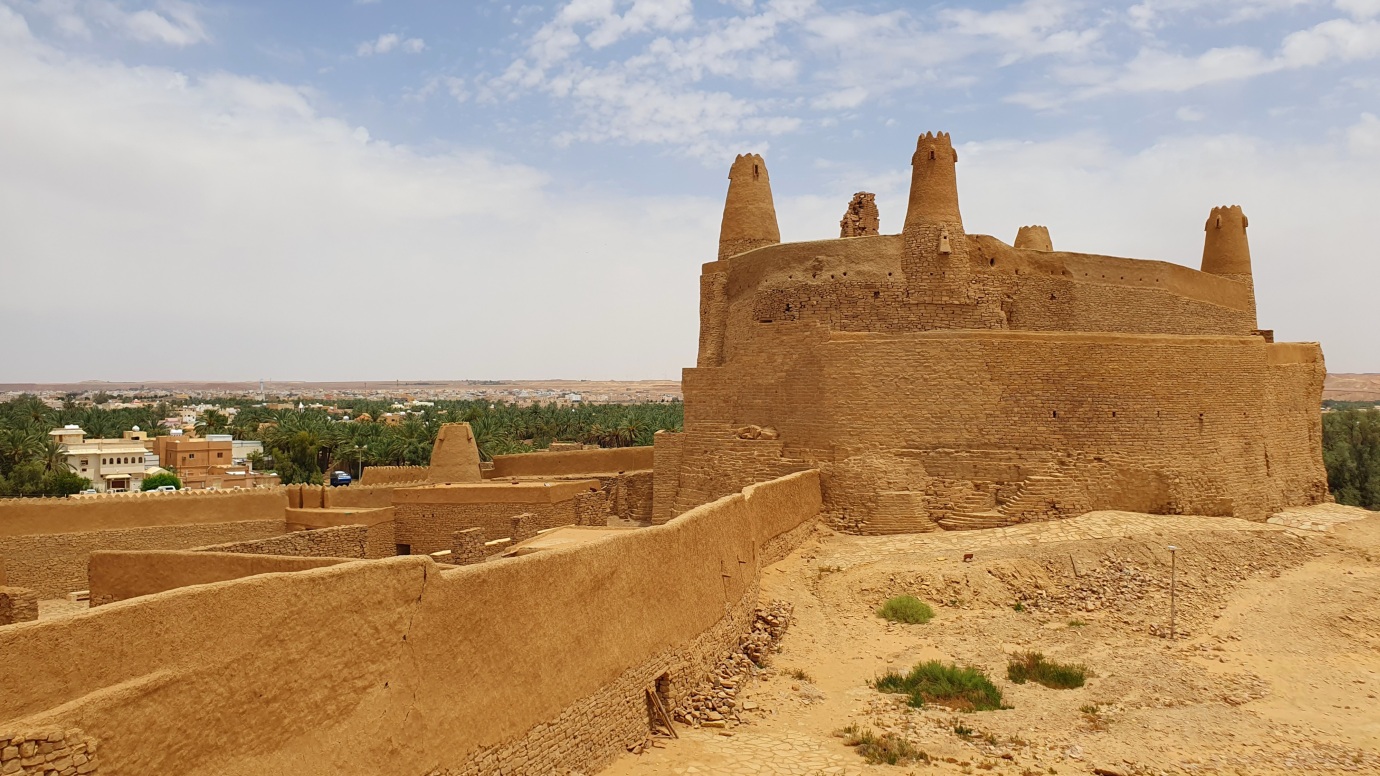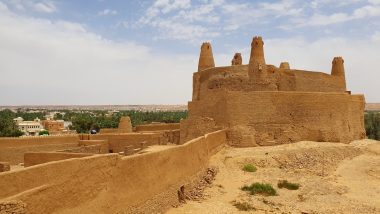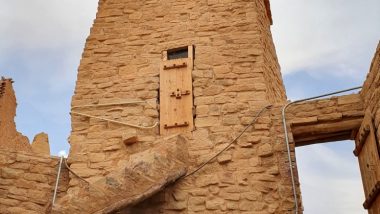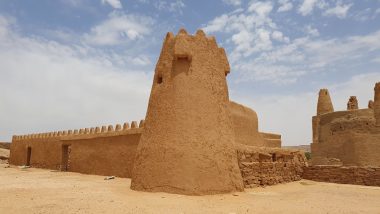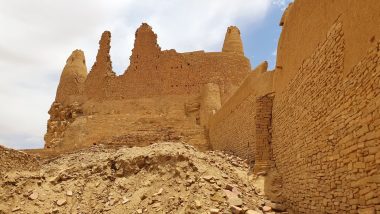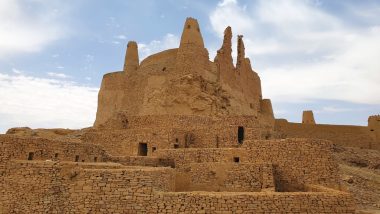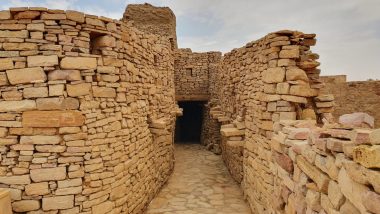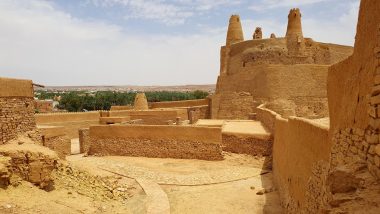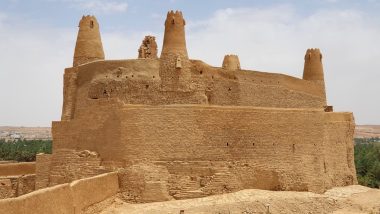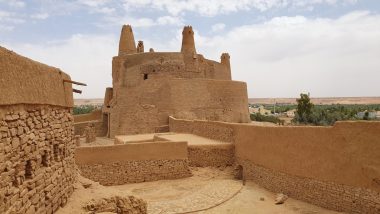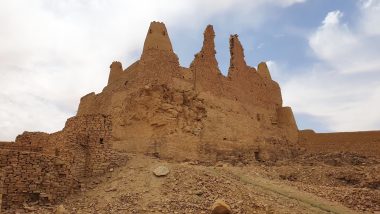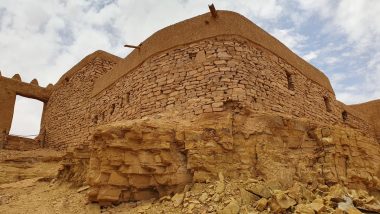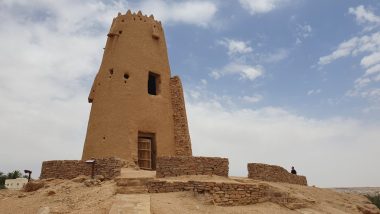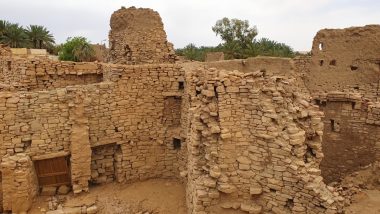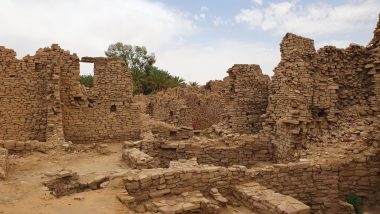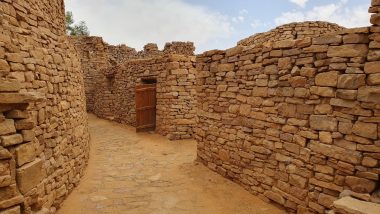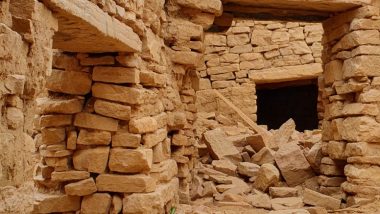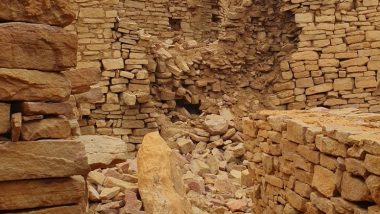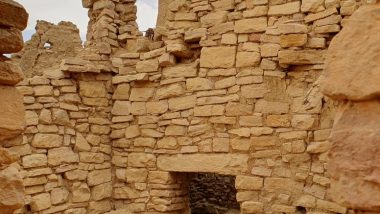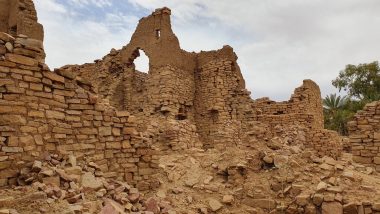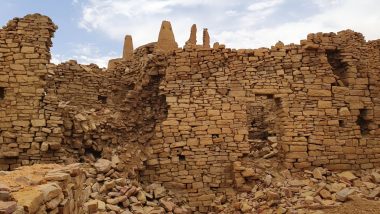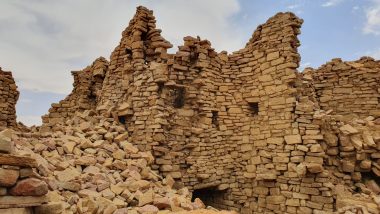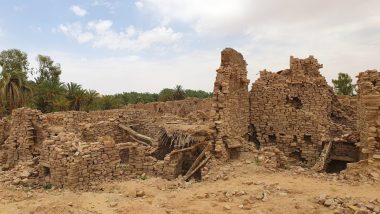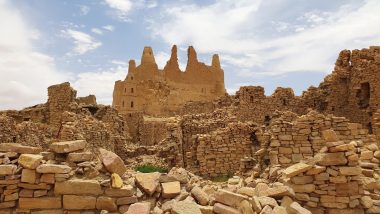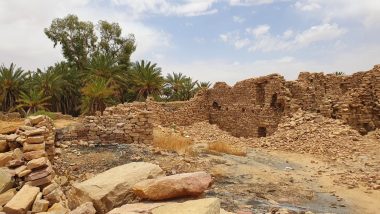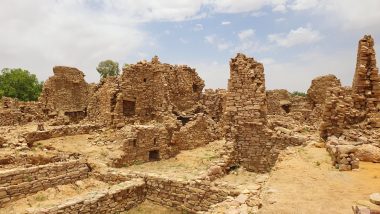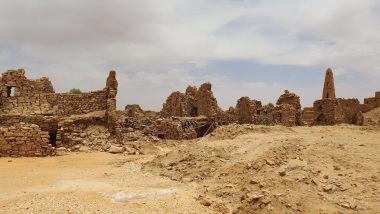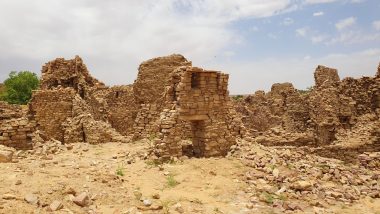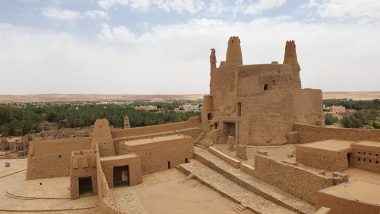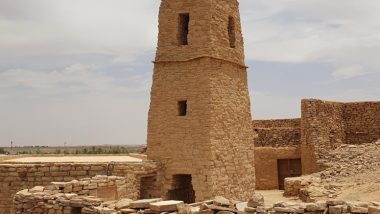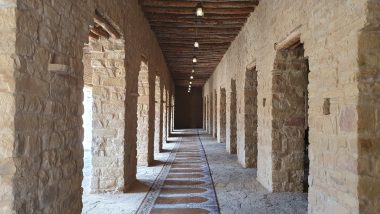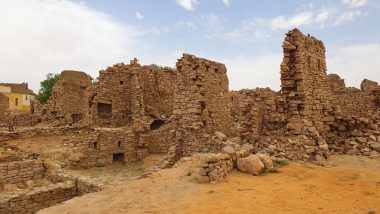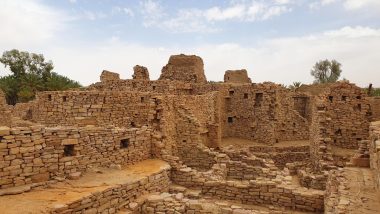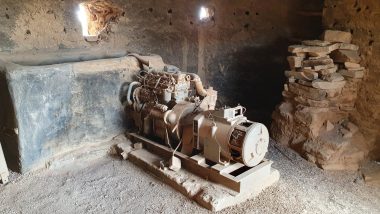Finally, we arrived at the ruins of ancient Dumatha, nowadays Dumat al-Jundal, located in North Western Saudi Arabia in the Al Jawf Province. It is the largest and best-known oasis at the northern limit of the great al-Nafud desert.
The city has a history dating back to the 10th century BC. It is mentioned in Akkadian inscriptions of the Assyrian empire dating to 845 BC, in which it is referred to as Adummatu. The site’s status as a major trade city only began to diminish in the 9th century CE when the caravan trade switched essentially to Makka and Medina and followed the pilgrimage routes or led to Damascus and Baghdad by the Zubayda route.
The town has survived through the ages thanks to the local ability to exploit water supplied by a complex system of wells, channels, and underground tunnels named Qanât.
The castle Marid stands on a natural limestone outcrop overlooking the valley where the ancient oasis lies. Its position, occupying what appears to have been a natural acropolis, suggests that this must have been the site of one of the oldest settlements at Dumat al-Jandal, dating back to Nabatean times.
According to Saudi scholars, the ‘Umar bin al-Khattab Mosque was erected in the Umayyad period (661-749). However, some attribute its construction to the time of Islam’s second caliph ‘Umar bin al-Khattab (634-644), and even carry his name. Pyramidal in shape, the minaret has five stories rising to a height of about 15 meters.
After the visit, we took lunch at the new and expensive Mishraf restaurant. Anyway, getting tasty Fettuccine Chicken Alfredo was refreshing after a long time 😃 spent in rural areas.
Parking location – Dumat al-Jandal: 29.812517N 39.866430E


